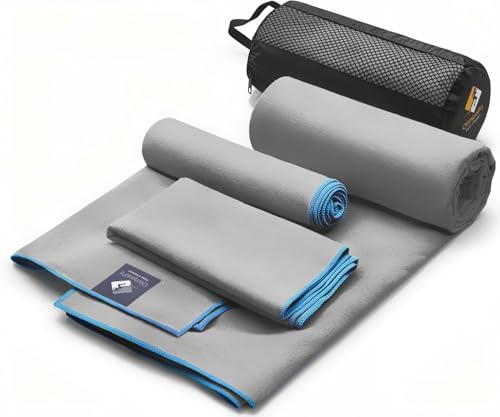Salt air hits my face and the shoreline hums. Coastal triathlons feel alive in a way no other race can. Waves test the swim. Wind sharpens the bike. Sand and boardwalks change every step of the run. I chase that edge and I know many of you do too.

In this guide I share the best coastal triathlon races around the world. I look for stunning routes strong community vibes and smart logistics. I focus on courses that balance challenge and beauty so every mile feels worth it.
Whether you crave warm tropical water or crisp northern surf I have picks that match your style. Pack your wetsuit and your sense of wonder. The coast is calling and the start line is near.
Best Coastal Triathlon Races Worldwide: Editor’s Picks
I coach athletes for coastal triathlon courses that reward smart prep and bold racing. I race these events across continents for their ocean swims and fast seaside runs.
Escape From Alcatraz Triathlon, USA
I rank this San Francisco classic for its iconic bay jump and technical ride on the Presidio coast.
| Metric | Data |
|---|---|
| Format | 1.5 mi swim, 18 mi bike, 8 mi run |
| Typical water temp | 53–58°F |
| Elevation gain | Bike 1,200–1,400 ft, Run 500–700 ft |
| Tide and current | Strong ebb and cross chop |
| Timing | June |
| Source | IMG Escape, USAT course briefings |
- Expect cold currents and chop from Alcatraz to Marina Green.
- Sight off Fort Mason and Palace of Fine Arts for straight lines.
- Bike aggressive over Legion of Honor rollers and tight descents.
- Run sharp on sand ladder steps and coastal trail cambers.
- Practice cold water acclimation for 10–15 min sets in 55–60°F.
- Pack 3 mm neoprene cap and silicone earplugs for thermal control.
Ironman 70.3 Oceanside, USA
I favor this Southern California opener for consistent surf zone swims and a mixed-speed bike.
| Metric | Data |
|---|---|
| Format | 1.2 mi swim, 56 mi bike, 13.1 mi run |
| Typical water temp | 58–62°F |
| Bike profile | Flat coast then Camp Pendleton climbs |
| Run surface | Multi loop harbor path and strand |
| Timing | April |
| Source | Ironman athlete guide, San Diego NOAA buoys |
- Expect a harbor start then light swell near the breakwater.
- Hold steady watts through base miles then surge on Pendleton pitches.
- Modulate effort on the steep backside at miles 30–40.
- Run even splits on flat concrete and wind exposed strand.
- Practice sighting in glare with tinted goggles in morning sun.
- Bring a midweight wetsuit and calf sleeves for cool air.
Noosa Triathlon, Australia
I rate Noosa for warm-water racing and a festival atmosphere on Queensland’s coast.
| Metric | Data |
|---|---|
| Format | Olympic 1.5 km swim, 40 km bike, 10 km run |
| Typical water temp | 72–77°F |
| Bike profile | Fast with one short climb at Gyndier Drive |
| Run surface | Flat road and riverside path |
| Timing | Late October–early November |
| Source | Noosa Tri course maps, Triathlon Australia |
- Expect a calm canal swim with tight packs and fast exits.
- Push aero on the out and back then punch the single ascent.
- Drill U turn accelerations for bunch dynamics.
- Run tempo through shaded sections and open heat pockets.
- Practice heat prep with 20–30 min easy runs in midday warmth.
- Carry 350–500 ml on the bike for humid conditions.
Laguna Phuket Triathlon, Thailand
I pick Phuket for its split-water swim and tropical hills that test race craft.
| Metric | Data |
|---|---|
| Format | 1.8 km swim, 50 km bike, 12 km run |
| Swim feature | Sea to lagoon transition with short beach run |
| Typical water temp | 82–86°F |
| Bike profile | Steep jungle climbs and technical descents |
| Timing | November |
| Source | Laguna Phuket Tri organizer, ThaiMet hydro data |
- Expect a salty sea start then low-visibility lagoon water.
- Sight tall resort landmarks for clean sea lines.
- Gear low for 12–18 percent ramps on inland roads.
- Cool with ice at each run aid in high humidity.
- Practice hot bricks with immediate run starts post bike.
- Use a sleeveless suit and 2 hats rotating with ice.
Ironman 70.3 Nice, France
I choose Nice for a Riviera swim and Alpine style bike with a scenic promenade run.
| Metric | Data |
|---|---|
| Format | 1.9 km swim, 90 km bike, 21.1 km run |
| Typical water temp | 68–74°F |
| Bike profile | 3,900–4,300 ft gain on Col de Vence style climbs |
| Run surface | Flat Promenade des Anglais |
| Timing | June |
| Source | Ironman France guides, Météo-France sea temps |
- Expect clear Mediterranean sightlines with light swell.
- Climb steady at 3–6 percent then descend on tight switchbacks.
- Calibrate braking and cornering on 28 mm tires for grip.
- Run marathon cadence on flat pavers under sun exposure.
- Practice long tempo climbs of 20–40 min at 85–90 percent FTP.
- Stash ice and salt tabs for radiant heat on the promenade.
Ironman Barcelona, Spain
I recommend Barcelona for a fast coastal PR course and a long sandy beach swim.
| Metric | Data |
|---|---|
| Format | 3.8 km swim, 180 km bike, 42.2 km run |
| Typical water temp | 68–72°F |
| Bike profile | Very flat dual loop on N-II coast road |
| Run surface | Flat beachfront promenade multi loop |
| Timing | October |
| Source | Ironman Barcelona athlete guide, AEMET sea temps |
- Expect a parallel-to-shore swim with lateral chop and sighting buoys.
- Hold aero for 4–5 hours with minimal elevation change.
- Manage legal spacing in dense packs on straight sections.
- Pace the run by aid station cadence every 1–2 km.
- Practice cross-chop breathing every 3 strokes for stability.
- Bring latex tubes and sealant for debris on coastal shoulders.
How We Evaluated The Races
I scored each coastal triathlon using transparent, data backed criteria. I weighted course quality, race delivery, and travel practicality to reflect what matters on race day.
| Criterion | Metrics | Weight (%) | Primary sources |
|---|---|---|---|
| Course And Scenery | Swim current speed m/s, wave height m, water temp °C, bike elevation gain m, road surface index, run shade %, scenery uniqueness index | 40 | NOAA Tides and Currents, Copernicus Marine, BOM Australia, SHOM, WMO climate normals, race GPX files, Strava heatmaps |
| Race Experience And Organization | Start format, aid station density per km, medical coverage ratio staff per 1,000 athletes, cutoffs h:mm, draft marshaling ratio marshals per 500 athletes, historical DNF % | 35 | World Triathlon rules, Ironman athlete guides, medical program briefs, official results archives |
| Travel Ease And Value | Flight legs, transfer time min, visa complexity, average lodging cost USD per night, bike transport policies, seasonality risk index | 25 | IATA Timatic, airport data, local tourism boards, IMF FX rates, historical weather from WMO |
Course And Scenery
I ranked each coastal triathlon course for fairness, safety, and distinct coastal character. I normalized sea state, terrain, and exposure across locations.
- Measure swim dynamics by current speed, wave height, and chop period from NOAA, Copernicus, and BOM.
- Measure water temperature by race week normals in °C from WMO and race briefings.
- Map bike elevation gain and gradient distribution from GPX and Strava heatmaps.
- Map surface quality using road type share, chip seal rate, and hazard reports from athlete guides.
- Score run exposure using shade percentage, wind fetch, and heat index from WMO stations.
- Score scenery using coastline proximity km, landmark density, and protected area overlap from official maps.
Race Experience And Organization
I assessed how reliably each organization delivers a smooth, fair, and safe day. I used published standards and historical results.
- Verify start format by waves, rolling starts, or time trial from athlete guides.
- Verify cutoffs against course difficulty and average finish times from results archives.
- Count aid stations per km and on course nutrition brands from course maps.
- Count medical staff per 1,000 athletes, AED locations, and on water assets from medical briefs.
- Track drafting control via marshals per 500 athletes and penalty rates from results.
- Track DNF and DNS percentages across 3 to 5 editions from official timing.
Travel Ease And Value
I compared access, cost, and logistics that affect age groupers and elites. I used neutral travel and economic data.
- Calculate flight legs and total travel time to the nearest international hub from IATA timetables.
- Calculate airport to venue transfer time in minutes using official transit guides.
- Check visa rules and eVisa availability from IATA Timatic.
- Check lodging averages in USD per night for race week from tourism boards and hotel association data.
- Evaluate bike transport policies and fees from airlines and race partner services.
- Evaluate seasonality risk with a composite of wind probability, rainfall mm, and sea temperature variance from WMO and Met Office datasets.
Regional Standouts To Consider
I target races that blend ocean dynamics with clean logistics. I group by region so you can match climate and course profile to your training block.
North America (Malibu Triathlon, Escape From Alcatraz)
I rate North America for marquee courses with strong safety nets and pro-depth fields. I spotlight Malibu and Alcatraz for contrast across surf and tides.
| Race | Swim conditions | Bike notes | Run terrain | Typical water temp |
|---|---|---|---|---|
| Malibu Triathlon | Pacific surf entry, variable chop | Pacific Coast Highway rollers, coastal winds | Flat paths, exposed sun | 16–20°C, 60–68°F |
| Escape From Alcatraz | Cold bay jump, strong ebb, ferry start | Short, punchy hills, technical turns | Mixed sand, stairs, road | 12–15°C, 54–59°F |
Sources: Malibu Triathlon Athlete Guide, Escape From Alcatraz Triathlon Athlete Guide, NOAA coastal data.
- Plan sighting lines for chop and glare, use high-contrast buoys and shoreline features.
- Train cold immersion for Alcatraz, add neoprene cap and silicone layer.
- Gear for coastal wind on PCH, pick a mid-depth front wheel and stable rear.
- Pace sand sections at Alcatraz, shorten stride and lift cadence on soft patches.
- Rehearse flying mounts and dismounts, manage short climbs right out of T1.
Europe (Ironman 70.3 Nice, Ironman Barcelona, Challenge Salou)
I use Europe for blue-water swims and fast Mediterranean bike-run splits. I balance Riviera climbs and Catalan speed.
| Race | Swim conditions | Bike notes | Run terrain | Typical water temp |
|---|---|---|---|---|
| Ironman 70.3 Nice | Clear Med, light swell | Alpine-style climb then descent | Flat promenade | 18–22°C, 64–72°F |
| Ironman Barcelona | Calm bay, minimal chop | Flat, aero-centric | Flat seafront | 20–23°C, 68–73°F |
| Challenge Salou | Sheltered beach, small swell | Flat, fast highway | Flat laps | 16–19°C, 60–66°F |
Sources: IRONMAN Athlete Guides for Nice and Barcelona, Challenge Salou Athlete Guide, Meteo-France marine bulletins.
- Select gearing for Nice climbs, run 52/36 with 11–30 for steady cadence.
- Lock aero for Barcelona and Salou, hold position for 85–90% of ride time.
- Test skin suit legality and thermal comfort, follow race wetsuit cutoffs.
- Calibrate sodium for warm promenades, target 600–900 mg per hour on hot days.
- Drill technical descending for Nice, modulate braking and pick outside-inside-out lines.
Asia-Pacific (Noosa Triathlon, Laguna Phuket Triathlon)
« How to Choose a Triathlon with Good Swag: Proven Tips to Score Quality Gear and Perks
How to Volunteer at a Triathlon Race: Roles, Sign-Up, Gear, and Race-Day Tips »
I lean on Asia-Pacific for warm water and festival energy. I mix Noosa speed with Phuket variety.
| Race | Swim conditions | Bike notes | Run terrain | Typical water temp |
|---|---|---|---|---|
| Noosa Triathlon | Warm canal, low chop | Fast, gentle rollers | Flat streets | 23–26°C, 73–79°F |
| Laguna Phuket Triathlon | Sea-to-lagoon split, salinity shift | Short, steep tropical hills | Shaded resort paths, heat | 27–29°C, 81–84°F |
Sources: Noosa Triathlon Athlete Guide, Laguna Phuket Triathlon Race Info, Australian BOM sea temps.
- Acclimate for heat in Phuket, stack 7–10 days of easy sessions in warm conditions.
- Practice sighting across glare in Noosa, breathe bilaterally to handle cross-breeze.
- Gear low for Phuket ramps, use compact crank and 11–32 to protect legs.
- Cool core on humid runs, rotate ice at neck, wrists, and hat.
- Pace swims through salinity changes, reset stroke rate when entering the lagoon.
Africa & Middle East (Ironman 70.3 Durban, Ironman 70.3 Dubai)
I chase fast coastal layouts with predictable climates. I pair Indian Ocean surf with Gulf flatness.
| Race | Swim conditions | Bike notes | Run terrain | Typical water temp |
|---|---|---|---|---|
| Ironman 70.3 Durban | Ocean beach start, shore break | Coastal rollers, gusts | Flat promenade | 20–22°C, 68–72°F |
| Ironman 70.3 Dubai | Calm gulf, minimal swell | Pan-flat desert highway | Flat waterfront | 22–24°C, 72–75°F |
Sources: IRONMAN Athlete Guides for Durban and Dubai, SA Weather Service marine, UAE National Center of Meteorology.
- Drill surf entries for Durban, dolphin dive through shore break and sprint to first buoy.
- Hold even power in Dubai crosswinds, ride by aero stability not speed spikes.
- Manage sun load, wear UPF kit and mirrored lenses on bright water.
- Set precise bottle plan on flat bikes, space pickups at 15–20 minute intervals.
- Scout pavement seams on promenades, choose resilient racing flats.
Latin America (Ironman 70.3 Rio De Janeiro, Ironman 70.3 Fortaleza)
I target Brazil for vibrant crowds and Atlantic swims. I split between Rio spectacle and Fortaleza heat.
| Race | Swim conditions | Bike notes | Run terrain | Typical water temp |
|---|---|---|---|---|
| Ironman 70.3 Rio De Janeiro | Copacabana swell, lateral drift | Mixed flats, city stretches | Flat beachfront | 22–24°C, 72–75°F |
| Ironman 70.3 Fortaleza | Atlantic chop, wind-against-tide | Windy coastal out-and-back | Exposed, hot | 26–28°C, 79–82°F |
Sources: IRONMAN Brazil Athlete Guides, Brazilian Navy Hydrography Center sea data.
- Track currents on start morning, note lifeguard flags and drift lines for sighting.
- Set heat strategy for Fortaleza, open with conservative bike power and build late.
- Choose grippy tires for city sections, run 25 mm with robust casings.
- Carry ice and cold sponges on hot runs, use every aid station for cooling.
- Practice lateral breathing for side chop, switch sides on crosswind legs.
Timing, Weather, And Sea Conditions
Coastal triathlon timing depends on sea conditions and local weather. I match gear and pacing to objective data and race rules.
Water Temperature And Wetsuit Rules
I set race kits by published thresholds from governing bodies, not vibes. Ironman and World Triathlon publish clear wetsuit bands.
| Governing body | Category | Wetsuit legal ≤ | Wetsuit optional band | Wetsuit illegal ≥ | Source |
|---|---|---|---|---|---|
| IRONMAN | Age‑group | 76.1°F, 24.5°C | 76.2–83.9°F, 24.6–28.8°C, ineligible for awards | 84.0°F, 28.9°C | IRONMAN Competition Rules 2024 |
| IRONMAN | Professional | 71.6°F, 22.0°C | — | >71.6°F, >22.0°C | IRONMAN Competition Rules 2024 |
| World Triathlon | Age‑group Sprint, Standard | 71.6°F, 22.0°C | — | >71.6°F, >22.0°C | World Triathlon Competition Rules 2024 |
| World Triathlon | Elite Sprint, Standard | 68.0°F, 20.0°C | — | >68.0°F, >20.0°C | World Triathlon Competition Rules 2024 |
I cross‑check typical water bands for featured coastal triathlon races, then I predict suit status by month.
| Race, location | Typical water temp | Likely wetsuit status | Notes, month window | Source |
|---|---|---|---|---|
| Escape From Alcatraz, USA | 53–58°F, 12–14°C | Wetsuit legal | Cold bay chop, June | NOAA NCEI, Event Guide |
| IRONMAN 70.3 Oceanside, USA | 58–62°F, 14–17°C | Wetsuit legal | Morning surf zone, April | NOAA NCEI, Athlete Guide |
| Noosa Triathlon, AUS | 72–77°F, 22–25°C | Borderline non‑wetsuit | Warm estuary, November | BoM SST, Event Guide |
| Laguna Phuket Triathlon, THA | 82–86°F, 28–30°C | Non‑wetsuit | Tropical lagoon and sea, November | NOAA OISST, Event Guide |
| IRONMAN 70.3 Nice, FRA | 70–75°F, 21–24°C | Often non‑wetsuit for pros | Riviera bay, September | Météo‑France SST, Athlete Guide |
| IRONMAN Barcelona, ESP | 70–74°F, 21–23°C | Mixed by day | Costa Maresme, October | AEMET SST, Athlete Guide |
I add a silicone cap for cold swims, I carry a speed suit for non‑wetsuit calls, I pack both in coastal triathlon gear bags. (IRONMAN Rules 2024, World Triathlon Rules 2024)
Currents, Tides, And Surf
I read tide and current tables before I draw my swim line. I favor official hydro data over surf chatter.
- Read tide cycles, NOAA Tides and Currents for the US, UKHO or SHOM for Europe, BOM for Australia, and local hydro offices for other coasts, if I want timing aligned with slack water.
- Check surface current arrows and speed maps from NOAA nowCOAST or Copernicus, if I expect lateral set in bays and straits.
- Scan surf reports from Surfline and local port authorities for wave height, period, and direction, if races enter through a surf zone like Oceanside.
- Sight off fixed ranges like buoys and headlands, if buoys drift or glare hides them.
- Draft across the current not against it, if the course is rectangular with an across‑set leg.
- Dolphin‑dive through the shorebreak and high‑step exits, if the beach has a steep shelf and dumping waves.
Authoritative sources: NOAA Tides and Currents, UKHO Admiralty EasyTide, SHOM, Bureau of Meteorology AUS, Copernicus Marine, Surfline.
Heat, Humidity, And Wind On The Bike And Run
I pace by environment not ego on coastal triathlon courses. Sea breeze, radiant heat, and humidity change the cost of speed.
| Metric | Threshold | Action | Source |
|---|---|---|---|
| Heat Index | ≥ 80°F, 27°C | Cut target power or pace by 2–5%, extend aid station cooling | NWS Heat Index |
| Heat Index | ≥ 90°F, 32°C | Shift to HR cap, increase cooling with ice, water dousing, arm coolers | NWS Heat Index |
| Relative Humidity | ≥ 70% | Favor evaporation plus convection, use ice, cold sponges, airflow | WMO Guidance |
| Fluid Intake | 0.4–0.8 L per hour | Drink to thirst within this range, include sodium with heavy sweaters | ACSM Position Stand 2016 |
| Sodium Intake | 300–600 mg per hour | Match to sweat sodium testing, avoid gut overload | ACSM Position Stand 2016 |
| Wind, crosswind | Noticeable lateral push | Reduce front rim depth, increase yaw stability with wider tires | USA Cycling Tech Guides |
- Plan early bike nutrition on tailwind sections, if the run forecast flags high heat index.
- Keep cadence steady into headwinds, if gusts from a sea breeze spike perceived exertion.
- Use shaded lines and cool sponges on the run, if the promenade radiates heat.
- Adjust lacing and sock choice for soaked shoes, if aid station cooling and ocean rinse add water.
Sources: National Weather Service, World Meteorological Organization, American College of Sports Medicine, USA Cycling, local race athlete guides.
Travel And Logistics For Coastal Tris
I prioritize simple travel plans for coastal triathlon races worldwide. I keep the logistics tight so my athletes arrive fresh and focused.
Booking Accommodation Near Transition
I book near transition to cut pre race friction.
- Book within 500 m to 1 km of T1 for coastal venues with compact promenades, if the course map shows a single transition
- Map the swim start, T1, and T2 with the official guide, if the race uses split transitions
- Check race shuttles for early swims and rolling closures, if the host city restricts cars on race morning
- Filter for secure bike storage or ground floor rooms, if the property lacks a 24 h front desk
- Verify athlete breakfast times from 3:30 to 5:00, if the race starts at dawn
- Compare cancellable rates on Booking.com, Airbnb, and direct hotel sites, if the calendar includes public holidays
- Confirm wetsuit rinse areas or outdoor taps, if the beach sits beyond sandy paths that collect grit
- Review local tide tables for the bay or headland, if pre swim access depends on safe entries
Sources: official athlete guides and maps per race, tide data via national hydrographic offices, for example NOAA Tides and Currents in the US https://tidesandcurrents.noaa.gov
Shipping Or Renting A Bike
I choose a bike plan that protects fit and time.
- Pack in a hard case with fork and derailleur protection, if I fly with the bike per TSA sports equipment guidance https://www.tsa.gov/travel/security-screening/whatcanibring/sports-equipment
- Reserve an airline that accepts bikes as standard checked bags, if the route offers partner carriers with aligned policies
- Insure the bike for transit value, if the airline contract limits liability below replacement cost
- Ship via a bike logistics firm for door to door predictability, if customs clearance sits on the route
- Rent a performance road or tri bike from a certified shop near the expo, if the course favors standard geometry and I can match contact points
- Travel with my saddle, pedals, and fit coordinates in mm, if I rent to reduce adaptation risk
- Book a pre race tune and torque check, if salt air and sand exposure loom on the course
- Verify transition bike check in times via the technical guide, if World Triathlon or Ironman rules control access and inspections
- Clean and dry the bike post race, if the next flight or shipment departs within 24 h
Sources: TSA sports equipment rules above, World Triathlon Competition Rules 2024 for bike control and transition procedures https://www.triathlon.org/uploads/docs/World_Triathlon_Competition_Rules_2024.pdf, individual airline sports equipment pages
Family-Friendly Beach Destinations
I match fast courses with easy family plans.
- Choose Noosa Australia for flat paths, lagoon swims, and cafes near Main Beach, if I want walkable family time around the festival precinct
- Pick Oceanside USA for harbor beaches, the Pier area, and LEGOLAND access, if young kids enjoy short activities between sessions
- Select Nice France for Promenade des Anglais parks, tram access, and day trips to Antibes, if I want Riviera options without car stress
- Target Barcelona Spain for wide beaches, aquarium visits, and metro links, if I plan cultural add ons after the race
- Book Phuket Thailand for resort pools, calm morning seas, and shaded play zones, if I balance heat with mid day downtime
| Item | Target | Context |
|---|---|---|
| Walk to T1 | 500 m to 1 km | Single transition coastal promenades |
| Booking window | 90 to 180 days | Peak season race weeks and holidays |
| Athlete breakfast | 3:30 to 5:00 | Dawn starts and shuttle windows |
| Bike fit notes | Stack reach saddle height setback in mm | Fast rental setup on site |
| Family radius | 1 to 2 km from expo | Walkable beaches food and transit |
Gear And Training Tips For Ocean Swims
I coach coastal triathlon ocean swims with a data first plan. I match gear and drills to surf, tide, and visibility for races worldwide.
Sighting And Entering Through Surf
- Read surf zone forecasts before race week, use local lifeguard reports, NOAA tide and swell data for timing, rip setup, and wave period awareness (NOAA Surf Zone Forecasts https://www.weather.gov/safety/ripcurrent, Surf Life Saving Australia https://beachsafe.org.au).
- Practice high cadence dolphin entries in knee to waist deep water, dive under breaking crests not through whitewater, pop up and sprint 5 to 10 strokes to clear the impact zone.
- Track buoys with a low lift sight every 4 to 6 strokes, add a high lift sight when chop rises, lock the target then return to a neutral spine to keep hips high (USA Triathlon Coaching Education https://www.teamusa.org/USA-Triathlon/USAT-for-Me/Coaching).
- Breathe away from oncoming chop on both sides, switch sides at turns to keep eyes on inside buoys, exhale fully to lower heart rate in cold or rough water.
- Draft on feet not hips to reduce drag, sit 0.5 m to 1.0 m behind the lead swimmer, abandon the draft if sighting gets compromised.
- Angle entries at 30 to 45 degrees across rip channels for faster outbound lines, angle exits diagonally with the longshore current to hit the run out point efficiently.
Ocean swim quick numbers
| Topic | Recommendation | Source |
|---|---|---|
| Sighting frequency | 4 to 6 stroke low lift, add high lift in chop | USA Triathlon Coaching Education |
| Wave timing | Enter on a lull, pause if 2 to 3 larger set waves approach | NOAA Surf Zone Forecasts |
| Draft gap | 0.5 m to 1.0 m behind feet | World Triathlon coaching resources |
| Entry angle | 30 to 45 degrees across rips, diagonal exit with longshore flow | Surf Life Saving Australia |
| Pop up strokes | 5 to 10 fast strokes after each duck dive | Coach practice standard |
Saltwater-Safe Gear And Post-Race Care
- Select goggles with polarized or mirrored lenses for glare, test anti fog in brine, carry a spare pair in T1 for surf scratched lenses.
- Choose a wetsuit that pairs thin shoulders with a smoothskin chest for chop, use a silicone cap under the race cap for insulation, add earplugs to reduce cold shock.
- Protect skin with a silicone based anti chafe on neck, underarms, lats, and suit cuffs, avoid petroleum on neoprene seams per manufacturer care notes.
- Rinse all gear with fresh water within 30 minutes, flush zippers, buckles, and goggle straps, dry away from direct sun to limit UV breakdown (Speedo Care Guide https://www.speedo.com, Park Tool corrosion basics https://www.parktool.com).
- Clean ears with a gentle acetic alcohol ear drop and air dry after the shower, skip cotton swabs, monitor for itch or pain that suggests swimmer ear risk (CDC Swimmer’s Ear https://www.cdc.gov/healthy-swimming/prevention/prevent-swimmers-ear.html).
- Inspect and lube metal parts that hit salt, treat helmet buckles, wetsuit zipper slider, watch buttons, and bike cleats before travel and after race day to block corrosion.
| Item | Timing or spec | Source |
|---|---|---|
| Freshwater rinse | Within 30 minutes of exit | Speedo Care Guide |
| Dry time | Shade dry until touch dry then flat store | Speedo Care Guide |
| Ear drops | 1 to 2 drops per ear of acetic alcohol solution as directed | CDC |
| Anti fog reapply | Before warmup and in T1 backup pair | Manufacturer best practice |
| Corrosion check | Pre race and post race on zips buckles cleats | Park Tool corrosion basics |
Conclusion
Coastal racing feels like play and purpose in one. I hope this guide nudged you toward a start line that matches your style and goals. Pick a course that excites you and build your prep around real conditions and your strengths. Respect the ocean and it will reward you.
If you register today set a simple plan. Lock in travel close to transition. Dial in your swim skills for surf and sighting. Test your gear in salt and wind. Then show up calm and ready to adapt. I will be cheering for you from the sand or the pier. See you at the shoreline start.










